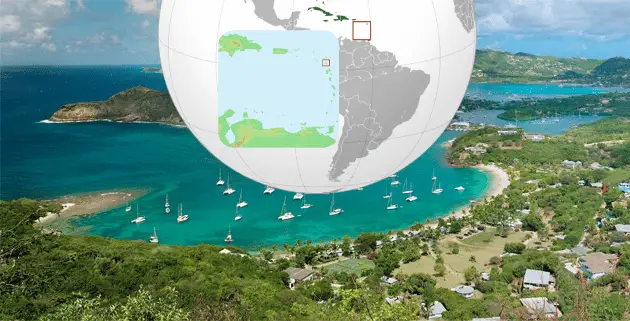Ecotourism hub of Mtunzini under threat
Mtunzini – From unspoilt ecotourism hub to dusty, mining town in 10 years?
The proposed mining of the area south of Mtunzini in KwaZulu-Natal (KZN) has been on the cards for more than 13 years, but following an appeal by the Mtunzini Conservancy having been rejected by the MEC for Agriculture and Environmental Affairs, KZN in August, this idealic tourism destination may soon resemble a red lunar-like landscape, writes Bruce Hopwood.

Exxaro / Tronox
Tourism brochures boast about its ‘pristine coastline’ and ‘zig-zagging rivers and streams’ in a ‘clean and safe environment’. They also mention its commitment to the ‘preservation of its natural heritage’. But if mining giant Exxaro / Tronox gets its way, all this could be lost for future generations who may well wonder how a village like Mtunzini and its ravaged, dusty surroundings was ever known as the Jewel of the Zululand coast.

Exxaro / Tronox were due to start mining the 4 000-hectare Fairbreeze site in 2013, but the Mtunzini Conservancy have delayed this to 2015, following lobby action due to the water use licences not having been granted. The minerals to be mined include titanium, ilmenite and zircon, with the richest deposits found in Fairbreeze C Extension adjacent the Xaxaza Leisure Park at the end of Mimosa Street where Exxaro / Tronox hopes to start mining.
All Hillendale staff will transfer to Fairbreeze and only 26 new permanent jobs will be created. Exxaro / Tronox claims that just over 1 000 temporary jobs will be created in the construction phase – mostly when the plant is physically lifted off the Hillendale site and moved along the N2 (the bridges will be lifted to allow the plant to pass underneath) to Fairbreeze and later when the plant is enlarged.
Once Exxaro / Tronox gets the go-ahead to mine, the present vegetation on the mine site will be bulldozed and burnt, exposing large areas of soil which will then be broken down by a high-powered hydraulic process requiring 48 million litres of water a day running 24 hours a day.
The minerals are then extracted from this slurry and the waste pumped to two slimes dams about 5kms away on the inland side of the N2.

One of the main concerns of the Mtunzini Conservancy and the Mtunzini Residents Association (MRA) who are opposing the mining is that these mega-dumps, as they are also known, are not only enormous (600 hectares in size, 5 kms long and 1,4 kms wide) but are sited on environmentally sensitive wetlands, and will never be able to be rehabilitated. These dumps will become a permanent eyesore at the entrance to Mtunzini.
To understand the size of these slimes dams, you have to imagine 17 golf courses the size of Mtunzini Country Club placed side by side. “There is no evidence in the Basic Assessment Report (BAR), or elsewhere that we know of, to support the claim by Exxaro / Tronox that such slimes dams can be successfully rehabilitated to economic timber production – or any other crop,’ said a spokesperson for SOS (Save Our Sands) which represents the interests of the Conservancy and the MRA.
“It appears that the slimes dams could be a threat to safety, and blot our landscape forever. A literature search indicates that 30m high dam walls are at the upper safe limit for slimes dams. The planned Fairbreeze slimes dams will be 37m high in places.
“There is also no evidence to support the claim by Exxaro / Tronox that the soil hydraulically shattered by the process can be ‘reconstituted’ and returned to the highly productive agriculture and forestry that is currently in place.
“Exxaro / Tronox claims that the existing Hillendale mine operation is supposed to provide all the answers with respect to rehabilitation of the mined area and the slimes dams and that lessons learned at Hillendale will be applied at the proposed Fairbreeze mine.
“From our perspective, there is nothing to suggest that they have learned how to do anything at Hillendale. From recent visits to Hillendale, Google Earth images, and several aerial surveys there is scant evidence of successful rehabilitation work that has been completed and reported on and/or published in reputable journals.”
“If Exxaro / Tronox doesn’t get this right, we could be left with a wasteland,” says Jim Chedzey who leads the SOS campaign. Not only a wasteland but a town which has lost its allure and with little chance of future investment.
According to the municipal valuation roll, the village of Mtunzini represents an investment of R1-billion with an annual rates base of R12-million. In contrast, Exxaro is expected to make R1,2-billion profit annually in the twelve years that it will mine at Fairbreeze and is expected to pay uMlalazi Municipality only R1,6m in annual rates.
Since King Cetshwayo’s white chief, John Dunn, discovered its charms in the 19th Century, Mtunzini has always been an attractive place to live or holiday in one of its many guest houses.
Today it is just a hop off the N2 with easy access to Richards Bay, the famous game reserves of Zululand, King Shaka International Airport and Durban. It’s the kind of village where one will meet a zebra at the pedestrian crossing or a Woollynecked Stork at the stop street.

It has a history of respecting its environment and sense of place. In the 1940s the local civic authority handed over large portions of the coastal forest to the Natal Parks Board as it was concerned about the high level of poaching taking place.
A decade later Ian Garland moved to a neighbouring farm where he pioneered stream rehabilitation and started the first environmental education centre in South Africa. By the millennium, Mtunzini had become the first urban area to be granted conservancy status and it had received many accolades and conservation awards for its work in the clearing of alien invasive plants.
Its residents are fiercely protective of its eco-estate lifestyle and have fought many hard battles to keep it that way but the proposed mining is without a doubt its biggest challenge – taking up many voluntary hours of research, meetings, canvassing and fund-raising to cover legal fees.
But for residents the stakes are high. Property owners have been offered naught for their comfort – only the fear that their life savings will drop and devalue as Mtunzini becomes a less than attractive place to live or visit. At present, there are more than 100 houses on the market.
Residents are mostly concerned about the fine dust which will blow from an open-cast mine 100 metres away, as well as the noise levels of a 24-hour a day, seven days a week operation. They are also concerned about their water supply and water quality.
The mine will use more water in a day than the town uses in a month. Who can predict how this will affect this already critical resource, ten years down the road?

Not to mention, the main drainage lines on the Fairbreeze site which flow directly into the wetlands behind the sand dunes in the Siyaya Coastal Park.
The shock troops of this total onslaught on the town, are the residents of Xaxaza Leisure Park – a small community of 65 retired pensioners who will bear the worst brunt of the mining.
This quiet, shady warren of narrow lanes lined with modest cabins and a popular caravan park only has a 100-metre barrier of nine-year-old trees between it and one of the dirtiest mining operations seen on the South African coast.
“It’s absolutely dreadful,” says Xaxaza co-owner Merle Muller about the prospect of mining right opposite her entrance. “I spoke to the owner of Harbour Lights [a caravan park on the Hillendale site] and he said: ‘Merle, the day they start mining you may as well close your business because no one is going to stay at your caravan park and the permanent residents certainly won’t want to live under those conditions.
“He said it was so dirty and dusty that residents had to wash everything every day if it had been left outside. We all wrote letters to Exxaro / Tronox and the Minister begging them to move the mine a safe distance away from us. I posted 65 letters but it seems to have been a waste of time because we haven’t received a single reply. Not even an acknowledgement from Exxaro / Tronox . And what’s it going to do to our health? We’re all pensioners here.”
Also of huge concern is the future of the Twinstreams Environmental Education Centre situated just above the confluence of the Siyaya and Amanzimnyama streams.
Begun 60 years ago by sugarcane farmer, the late Ian Garland, who foresaw the threat faced by the environment long before the present debate on climate change, Twinstreams is now run jointly by the Wildlife and Environment Society of South Africa (WESSA) and Mondi (the present owners of the land to be mined).
Every year, more than 4 000 school children pass through the Centre where they have the chance to explore several pristine, diverse ecosystems, study riverine rehabilitation, the impact of humans on catchments as well as enjoy fun activities such as hiking along the beach and canoeing in the estuary. Because of Ian Garland’s proud legacy, Twinstreams has always been a valuable lesson to all who pass through it that individuals can make a vital difference.
But to many, having an environmental education centre on the edge of a mine is a bizarre and abhorrent mental image.
In its answer to the concerns raised about the future of Twinstreams Centre, the Addendum Report noted only that Exxaro / Tronox ‘should financially assist with investigating suitable alternative sites’.
In his lifetime, Ian Garland estimated that he had planted over 60 000 indigenous trees – not only on his own farm but along most of the watercourses on the Fairbreeze site and wherever he felt the landscape needed a bit of ‘cheering up’.
Mtunzini’s sense of place owes much to his voluntary tree-planting, enthusiastic guidance, first-hand knowledge and foresight. At his funeral in 2007, all the tributes referred to his life’s work of creating a forest along the Siyaya as his living monument. Who knows how this monument will look in 2020 if the mining goes ahead.
“Many of us learnt some valuable life lessons from Ian Garland and we saw what a lonely battle he fought most of his life to try and save the Siyaya catchment,” says longtime resident and farmer Bruce Hopwood.
“It’s painful for us to be in the Fairbreeze area and ponder the future of his extraordinary legacy. He only wanted to leave the world a better place than he found it and now we’re faced with its plunder by a faceless multi-national company that only sees profits and will never know what we have lost.”
The Mtunzini Conservancy is a registered NPC with Section 18A tax status and can issue tax certificates for donations made. For more information visit: www.mtunzini.co.za







